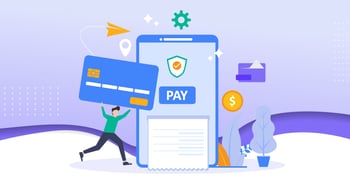Are you a freemium victim?

Many companies that struggle with growth at some point in their evolution or are considering trying a new, maybe even bold strategy, end up giving a chance to the freemium model. Even though, as an online business, you have different costs to cover, like ensuring global SaaS compliance or fraud detection expenses, the freemium model has the power to significantly boost your conversion rate, making it a wise choice in terms of strategy. Winning SaaS free trial users is a goal. The freemium pricing strategy has been around since the 80s, picking up great speed starting with 2010. While it succeeded in heavily boosting certain software products (particularly for gaming), it also has its serious share of failings and critics.
The main problem with adopting freemium is that it can be a tricky trip, with a pretty high risk of becoming a serious blow to the company’s sales. Keep reading to figure out if freemium is the right choice for your business and what is the mindset that usually leads to making a freemium mistake.
From my experience, three basic assumptions convince future freemium victims that this model is the right choice for them:
- Distribution: It will be much easier and cheaper to distribute a freemium product, and we’ll quickly gain more market share.
- Investment: We know it might take a bit longer to see the return, but I can feel it a mile away: it’s a very good long-term investment!
- Premium vs. Freemium: We will still keep our Premium paid version, so our revenue won’t even know we’re testing freemium.
No 3rd party integrations. No hidden costs. No wasted time.
Just a solution as unique as your business’s needs.
Distribution
Ok, this is a certainty: it is, indeed, cheaper to distribute a freemium version of your product. Taken with a grain of salt, however, because cheaper doesn’t mean free.
Add the freemium model has one of the lowest conversion rates in the software industry, averaging 1-2% for SaaS companies. Meanwhile, free trials aim for an average of 10% conversion rate, “just” 5 to 10 times higher.
In most cases, ROI rates for freemium software reach a value of 55 - 60%, while the vast majority of products barely scrape for a 25 - 30% ROI. If you factor in the generally low prices for freemium upgrades, you get an idea of how “profitable” it is.
My point here is that you should balance the customer acquisition cost with the probable conversion rate before making any decision about adopting freemium. You might be surprised. And if you are, it’s better to be surprised now than later, when it might get too expensive.
Long-term investment
If it works out for your product, freemium is a good long-term investment. The downside is that there’s a high chance of long-term bleeding IF it turns out to be the wrong decision. Operating with too many IFs (especially of the critical type) is not a wise business perspective, and you can try to reduce some of these IFs by testing & calculating a few key factors:
- What would be the average time between when a user downloads the freemium and the same user makes a purchase?
- How much do you expect the customer’s LTV (Lifetime Value) to be?
- How big would your operational costs with free users be? This refers to both customer support and the backend resources you will allocate.
Would these costs still make freemium a profitable business decision? After all, you could end up with 99% free users and a microscopic 1% of paying ones.
Premium vs. Freemium
In theory, freemium is not an utterly wrong option, and there are some (rare) examples where it produced great results. I have never seen a company play this card right, but I’m still giving miracles a chance.
When is freemium supposed to work out nicely, though? When you use freemium to penetrate a new market, assuming you have a generous budget and are a large enough company to be comforted by secondary benefits, like brand awareness, market positioning, etc. Freemium can surely deliver that (not sales, though) within a reasonable timeframe.
In most cases, however, freemium will likely choose to eat your premium profits for breakfast. And if that happens, you will be, sadly, an official “freemium victim”.
If there is one thing I hope you will remember from this article, it’s this million-bucks question to ask yourself before jumping on the freemium bandwagon:
How often does your client ACTIVELY use your product?
If your answer is daily (meaning your product is the type that evolves into a habit for users), going for freemium might hit the jackpot for you. If it’s less than daily, well, Houston, we have a problem!
It is important to understand that “active usage” means that your client is actually & directly engaging with your product. Spam filters or background utility apps don’t produce engagement, just to be clear.
It’s also critical that you constantly add value to your product and that its value is perceived by customers. What I mean by this is, for instance, that a bi-annual usage of a file converter or an update adding two new file encodings does not qualify as added value.
Customers must be helped to feel & remember that they should buy your product. This is quite easy to achieve by using smart blockers, limiting a full experience without forcing users to stop using the product altogether.
Here are a few examples of right and wrong blockers:
Good blockers:
Limiting storage/ file size - This gives your customers sufficient time to invest in the product, making it more than reasonable to pay for the full version (unless they take a strange pleasure in abandoning days of work within the product). The right amount of product dependency works wonders with customers.
Bad blockers:
Limiting core functionality after a certain amount of time has such a negative impact that I can’t even begin to describe how often & fast customers will run away from your product and your company. It can have huge operational and brand costs, meaning you might afford the risk only if you are a single player in a very in-demand industry.
Loss of progress (blocking access to product features when reaching a certain threshold) - is probably one of the most efficient ways to frustrate your customers and stimulate them to leave and publicly criticize your product.
It’s true, though: some amazing companies turned freemium into a highly profitable business model. Kudos to Dropbox, Evernote, and Spotify, to mention just a few. And then there are the less fortunate examples of companies failing at freemium, such as Avast.
So should you or should you not embrace the freemium model?
No 3rd party integrations. No hidden costs. No wasted time.
Just a solution as unique as your business’s needs.
This depends on your answer to the key question I mentioned earlier: how long does it take for a customer to test your product and become addicted? If the answer is “a few weeks”, freemium might be your next best thing. If you are dealing with products that generate value very quickly (also reducing future product usage), you should consider using a free-trial model to convert your users quicker & more cost-efficient.
Meir Amzallag
Meir Amzallag is the CEO and Co-Founder of PayPro Global, a leading e-commerce solutions provider for software, SaaS, and digital goods businesses. He is also the Co-Founder of Hocoos, the AI-powered website builder. As a thought leader in online commerce, he offers valuable insights and expertise through his writing, focusing on online payment processing, global tax compliance, subscription management, and the evolving landscape of AI-driven web development. Outside of his professional endeavors, he enjoys spending quality time with his family and pursuing his passion for photography.
-
1.Explore PayPro Global's Solutions: See how our platform can help you streamline your payment processing and boost revenue.
-
2.Get a Free Consultation: Discuss your specific needs with our experts and discover how we can tailor a solution for you.
-
3.Download our Free Resources: Access valuable guides, checklists, and templates to optimize your online sales.
-
4.Become a Partner: Expand your business by offering PayPro Global's solutions to your clients.
Get the latest news



